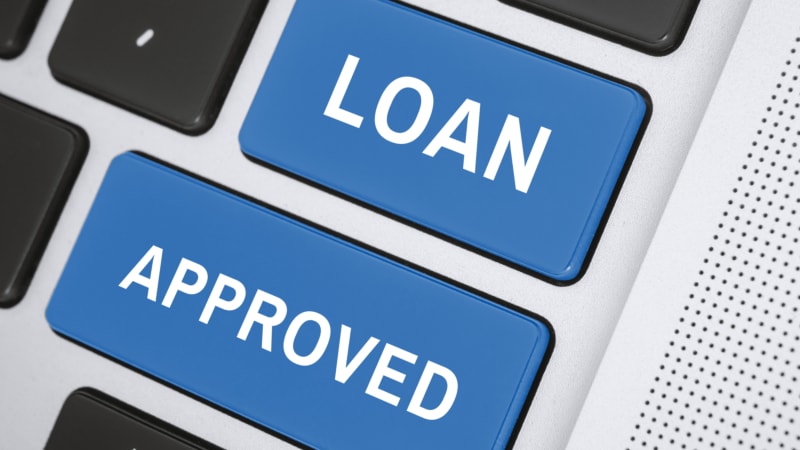
After a home, a car is typically the second most expensive purchase people will make. The credit tracking company Experian estimates that 80% of new cars and 38% of used cars are purchased with the help of a loan.
Like the car itself, there are many different companies offering different types of financing products, so it’s important to do some research and comparison shop before committing. It’s a big decision that can sound overwhelming, but hopefully this primer will help with the process.
1. Know your credit score
Your credit score will determine a lot about your car loan, including how much money you can borrow and what your interest rate will be. That in turn will decide how much your monthly payment will be and how long it’ll be before you pay off the loan.
There three major credit tracking companies, Equifax, Experian and TransUnion, and you can use any of them by going to AnnualCreditReport.com. These credit reports are free, so beware of anyone who charges a fee to do this. A credit report is also a good way to check if there’s been any fraudulent activity on your accounts.
The higher your credit score, the lower the interest rate. Experian has a breakdown of how your credit score ranks, but this isn’t set in stone. Different lenders will consider the numbers differently, within reason.
2. Shop around
Once you know your credit score, you can start shopping around for the best loan. The most common places to get a loan are:
- Banks: These institutions generally offer decent rates but will usually require an above-average credit score to qualify. You may also need to have an account with the bank. Larger national banks tend to have convenient apps and websites to help facilitate payments.
- Credit unions: These community-oriented lenders will typically have the best rates. You’ll likely need to be a member of the credit union, but some are easy to join. They may not have the convenience of a large nationwide bank, but if total cost is your concern, credit unions are generally the best option
- Online lenders: These have no physical locations and offer loans with rates competitive with banks. You may be able to get quotes from multiple lenders in one spot,
- Dealerships: Lastly, new and used car dealerships are more than happy to finance the loan for you and process it with the paperwork for the sale, but there’s a price for the convenience. Interest rates are likely to be the highest among all the options listed unless they’re offering a special promotion.
Car buying is all about negotiation, and the loan is no different. You might be able to get better terms by letting the lender know you’re shopping around for a loan.
3. Know your budget
A number of online auto loan calculators can help you figure out your monthly payment and how much you’ll have spent in total by the time you pay off the loan. You can extend the length of the loan for a lower monthly payment — but it’ll cost more in the long run.
Consider that in addition to monthly payments, you’ll have to account for insurance, fuel, and maintenance. It’s also a good idea to save up for any major repairs.
4. Get pre-approval
Once you’ve selected a handful of lenders, it’s time to get pre-approved for your loan. This is different than prequalifying, in which lenders give you a rough estimate of what your loan terms will be. Prequalifying requires what the financing industry calls a “soft pull” of your credit score, which isn’t as detailed as a pre-approval’s “hard pull.” By getting pre-approved, you aren’t obligated to commit to the lender if you find a better offer.
Pre-approval will give you the most accurate numbers of what you can expect when you finalize the loan. However, if you want to get pre-approved by multiple lenders, the pulls will lower your credit score by a bit each time. It’s best to arrange it so that the various lenders conduct credit checks within a one- to two-week span, which will reduce the impact on your credit score.
To get pre-approval, you may need to supply documentation, including proof of identity, proof of income (such as pay stubs), and Social Security number. Additional statements showing your assets may help you get a better rate. If you’ve moved recently, a lender may ask for proof of residence (such as mortgage statement or lease), They may also ask for the year, make and model of the car you intend to buy.
5. Finalize your loan
By now, you should have narrowed it down to one lender. With pre-approval, you can shop around for the actual car. It may be worth your while to see if the dealer can beat the loan you’ve been pre-approved for. Sometimes they offer promotions with low or zero percent interest rates.
Once you’ve selected a car and agreed on the purchase price with the dealer, notify the lender. They may ask for additional information, including the year, make and model, VIN, purchase price, vehicle registration, and proof of insurance. At this point you will give the dealer the down payment, and the lender will provide the remaining funds. If you decide to go with a dealer’s financing plan, they will take care of this part for you.
Finally, it’s time to get the keys and drive off in your new car!






